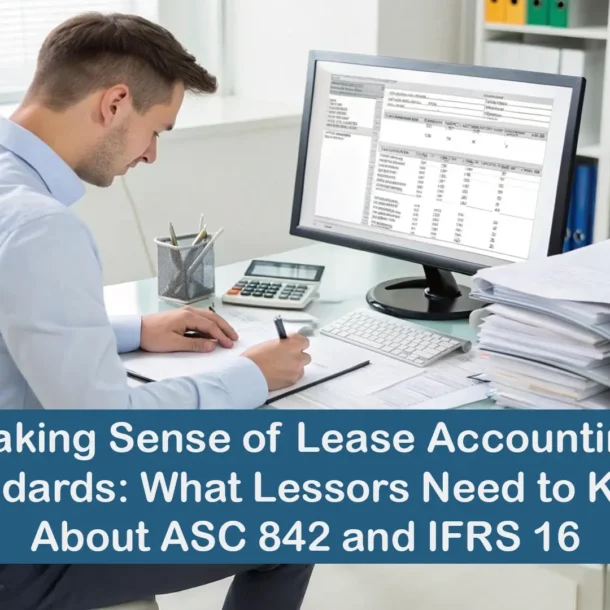
Optimizing Lease Agreements for Equipment and Vehicle Lessors an In Depth Guide
Athena
07/22/2025Introduction
Lease agreements are a legal document that describes how the lease will operate during the lease term, and the first step is to define the lessor’s and lessee’s relationship. Vehicle and equipment lessors must have clear, detailed, and flexible leases to protect their assets and ensure all leases run smoothly from the start to the end of the lease term. This is a guide to lease agreements that explains the key components of a typical lease agreement, the practical aspects of risk management, asset utilization, and the lessee’s responsibility.
Understanding the Basics
Every lease has a few critical building blocks to the agreement. These vital elements are not just procedural; they create the formality and relationship of the business arrangement. First things first: identify the start date and end date. Dates must be unambiguous if the contract includes both early termination terms and an extension or renewal. If the lease agreement contains terms for renewal, as well as the conditions allowing for an extended term, these should also be indicated.
Identifying the parties is another building block. The lessor is typically the asset owner or lender of funds to facilitate purchase or finance. The lessee is the party who takes possession of the asset. Other variables can exist in a lease agreement, including related parties or subsidiaries interested in the asset or that may also be offered usage or service rights. If this applies to a lessee, it is important to document any such entity that may receive or be afforded use or service rights. Taking the time to document reduces the risk of legal ambiguities.
When describing the asset, a general entry excavator or a delivery van will not suffice. Include specific details like serial numbers, VINs, make, model, and capacity. Being very detailed helps both parties know exactly what they are leasing in case of a dispute.
For immovable assets, location is recorded, e.g., construction equipment at a specific project site. For movable assets (e.g., trucks), the garaging or storage is relevant.
Additionally, the shipping of the asset will be the responsibility of the lessor or lessee. This is particularly relevant in fleet leasing or the delivery of assets across geographies. Assets shipped too late or to the wrong destination can create a disaster of delays and costs.
The usage parameters are one of the most overlooked, but very important. Will the asset be utilized for forty hours a week or eighty? Is it being deployed off road, at industrial sites, or on public roads? Are there any limitations on using it outside certain states or regions? These questions all dictate maintenance frequency, risk level, and ultimately residual value. Usage restrictions, whether by hours, mileage, or operational zones, should be spelled out to avoid confusion.
Assume nothing when it comes to maintenance and insurance obligations. When is the lessee responsible for maintenance, whether routine service, on call service, or required to comply with manufacturer guidelines? Same with insurance. More often than not, a lessor may dictate insurance for the lessee to buy, but allow a lessor to buy the insurance for the lessee (if not or cannot be purchased), and charge that cost back to the lessee. If a lessee does not provide proof of the required insurance coverage, the lessor must insure it to protect the asset.
Tailoring Lease Agreements to Specific Assets
Every asset is different, and so should the lease agreements. Heavy equipment such as backhoes or cranes, the wear and tear depend on the job site. Trucks used for interstate logistics operate under different conditions from trucks used for short haul city deliveries.
Lease agreements should reflect the condition in which the asset is used. Equipment specific clauses, for example, may have stipulations related to mandatory calibration, software updates, or safety inspections. In solar leasing, it may even extend to minimum guaranteed output levels. This type of customized agreement will not only protect the asset value but also ensure that the lessee’s expectations align with what the asset is capable of achieving in real terms.
For vehicles, restrictions on mileage permitted in geographic areas or driver suitability are applied. This drives value in managing the overuse of an asset, as well as geographic risk or loss of control.
Residual value considerations are critical for assets with a strong resale market. Lessors may elect to establish residual value objectives. The residual value of the asset may drive the lessee’s decision on whether to extend the lease, return the asset, or purchase. Leverage predetermined lease length with the asset’s depreciation curve so that you can maintain an orderly and predictable portfolio.
Terms and Conditions
While information on the asset and usage restrictions is important, the terms and conditions describe the mechanisms of the lease. In terms of payment, the payment structure should be clear so users know the amount they owe, whether it is fixed, usage based, or a hybrid, and the frequency. Likewise, with taxes, sales taxes and property taxes would need to be stated. The party responsible for taxes.
Advance payment is another area that needs clarity. Will it be refundable security deposits? Will it bear interest? Will it be applied to future invoices? If there are deposits, then there would need to be clarity on the return process, especially for deductions (for damages), unpaid amounts owed, and for failing an inspection.
Default clauses warrant some attention. A default clause specifies what actions are deemed a breach, anything from missing payments to using the asset without permission. Equally important is defining what happens next. Will default fees be charged only once or regularly? How can the lessee cure the default? Is there a right of reinstatement?
Repossession rights should be defined, including events that trigger repossession, the process, the right of access to premises if legal enforcement is necessary, and identifying responsibilities after repossession. Can the lessor pursue unpaid amounts, damages, or accelerated payment of future payments?
Protocols for amending leases are equally important. When assets are being added or removed, will assets be co terminus (i.e., all assets expire together), and is asset retirement feasible before the contract end date? In the case of non cancellable leases, removing the asset is largely not permitted before the term lapses, so careful attention to preserving that right is certainly the objective.
End of Lease Management
The end of a lease can be as involved as its start. Lessors need to define lessee options: Is there a renewal option? If so, at what rate, and under what terms? Is there an opportunity to purchase the asset, and how is the purchase price determined?
There are also asset return logistics to consider. Who arranges shipping? Should the asset need to be in working order? Will it be inspected? If repairs were done, will they be deducted from the deposit? Not being clear on issues like these often leads to problems or delays at the end of the term.
Specify timelines for all end of lease actions: notice for renewing or returning the assets. How long will the lessee have for inspection? How long will the lessee have to obtain a refund for their deposit? Being explicit on these issues will lead to less friction in the operations of the lease back and build levels of trust with lessees.
Roles and Obligations
Clearly defining roles facilitates the execution of leases and continuous management. Generally speaking, the responsibilities of the lessee include maintaining the asset in good condition, updating location information, and alerting the lessor of any operational changes. Indemnity clauses serve to protect the lessor’s interests in the event of the lessee’s bankruptcy.
Even though the lessor has fewer responsibilities, they are just as significant. Typical duties include providing operating instructions, ensuring asset readiness, delivering goods on time, and providing assistance during midlife or end of life events. The lessor is expected to replace or repair the asset that is not working.
The role of a vendor should also be described if they are part of the value chain, such as a third party that maintains the equipment. Installation, upkeep, midterm inspections, and even performance data collection may fall under this category.
Sale of Contract
Lessors frequently sell lease contracts to financial investors or portfolio managers while continuing to manage the leases. This is an effective way to recycle capital and increase liquidity for the lessor. The lease agreement should include a provision stating that the sale does not affect the rights and obligations of the lessee. The lessee will continue to pay and deal with the original lessor or servicing party to maintain continuity of operations.
Conclusion
Lessors who can articulate the core principles, customize terms to the asset usage, and maintain clarity around the roles of lessor, lessee, and agents develop strong leases that align their interests with lessees.
While a strong lease agreement acts to reduce risk, it also limits administrative burdens, improves asset performance, and increases predictability within portfolio management. Leases are useful documents that can evolve as markets develop, assets change, and customer expectations are defined. For lessors in the equipment and vehicle space, strong lease agreements that allow adaptability can lead to operational efficiency and sustained success.

Industry Associations
We're Here to Help!
Reach our dedicated support team
at info@athenafintech.com or +1 650 701 7703.
Questions or assistance?
We’ve got you covered.
Athena Fintech Inc.
HQ: California, USA
Tech Center: India
Athena Fintech Inc.
HQ: California, USA
Tech Center: India



